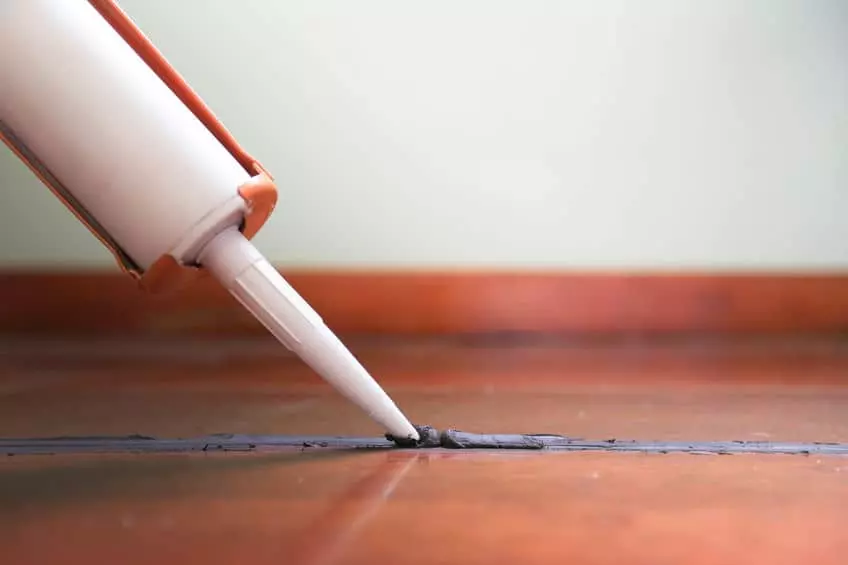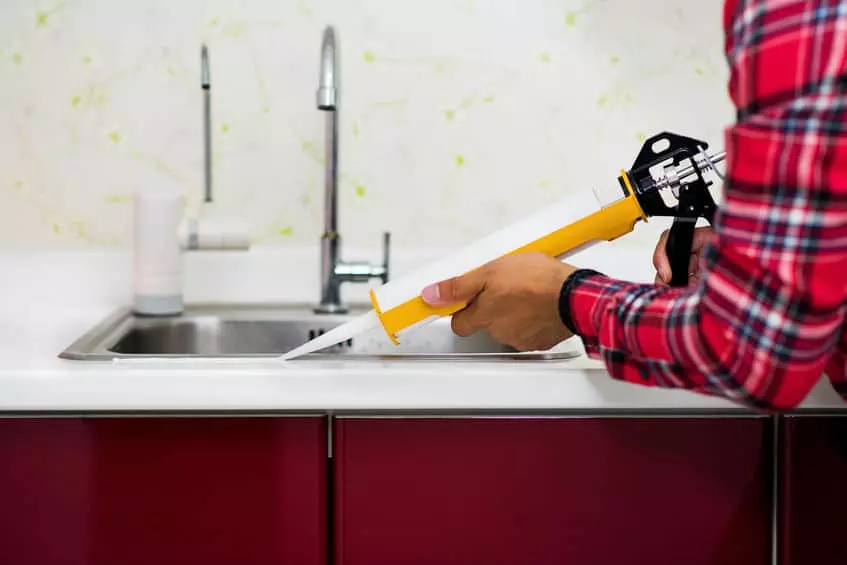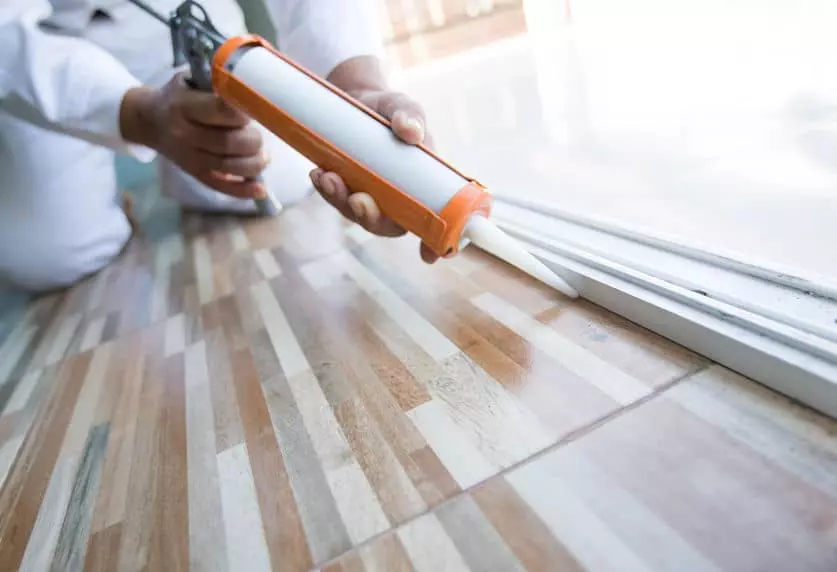There are so many sealants out there. As such, it can be hard to know which will be the absolute best one for the job in hand, and which will be best suited to particular surfaces. Wonder no more, with this brief building sealants guide, detailing the most common types of sealant, answering questions like what is mastic sealant, and what they are best used for.
Acoustic sealants

This kind of sealant can be used for sealing gaps around anything where sound needs to be controlled, such as floors, ceilings, and walls. In addition to that, this kind of sealant can be used to fill gaps around electrical outlets, for example.
- Low Modulus Acetoxy silicone
A low modulus silicone sealant is a great all-rounder, making them suitable for a large number of general work, as well as building work and sanitation. They can be used for exteriors, glazing, as well as being good for adhering to pretty much most common materials.
- Low Modulus Neutral Silicone
LMN Sealants are the one of the low modulus silicone sealants out there, as it is a great option to use as a window frame sealant. For sealing UPVC window or exterior door frames, this LMN offers better adhesion, as well as movement. For that reason it is one of the best window sealant choices.
- High Modulus Acetoxy Silicone
The use of a HMA silicone sealant is something that is best used for sealing in kitchens and for sanitary applications in a bathroom. To ensure that it works for a sanitary purpose, then it is best to make sure that the sealant contains a fungicide.
Adhesive sealants
Sealants are generally not adhesives, but some of them do have adhesive qualities. The ones that do are called adhesive sealants or also known as structural sealants. As the name suggests, they have a more ‘glue-like’ properties, and are strong and durable.
Call us for your sealant works – 0207 118 1152
Elastic sealants
Elastic sealants are a good choice for grouting, filling gaps, as well as waterproofing an area or closing off some joints and cracks. They can be used as an anchor for metal bars in building materials, as well as used for bonding, joining, and assembling a variety of materials.
Floor Sealants
There are a variety of floor sealants to choose from, depending if you are using wood, tiles, or laminate floors, for example. However, they all work in the same way, to secure the floors, and to make it sturdy. They are tough and should be used where you don’t want any movement.
Foam Sealants

Using foam sealant can be a very effective air barrier. It is mostly used to prevent drafts that you could get from windows, doors, and floor boards, and it helps to create a more comfortable environment indoors. When using insulating foam sealant, it can also help to stop exterior noise.
Latex Sealants
A popular choice for homes because it is easy to use and apply, and sticks to most materials. They are a good choice where there are some very small gaps and where movements are very minimal. Latex can be prone to shrinking, and can create gaps over time, so that is something to consider.
Metal Sealants

There are a number of metal sealants to choose from, and many of them are designed to be used with specific metals. Tripolymer, for example, is a sealant used for different surfaces and sealing architectural metals.
Food Grade Silicone Sealants
A silicone sealant that is going to be around food needs to be top of the range. Food grade silicone sealants can come into contact with raw meat, and so, need to be FDA Certified.
Patio Sealants
When you use a quality patio sealant, it helps the surface to become water resistant, making it much harder for any algae and mould to grow. Patio sealant can also make general cleaning and maintenance easier.
Oil Based Mastic Sealants
Mastic sealant is a traditional sealant that has been used for years and years. It is a sealant that is economical, and works well as a general purpose sealant when little or no movement is required. This kind of sealant can dry out and even crack over time, so replacing can be required.
Polysulfide Sealants
Polysulfide sealants seal joints that are subject to a lot of movement, and where a strong, yet flexible and watertight seal is needed. They can be quite tricky to use, just because of how strong and tough they are. In recent years some manufacturers have discontinued polysulphide sealants because of this, although you can still get it.
Contact us for Free Quote
Polyurethane Sealants
Polyurethane sealants are the sealants that are most commonly used for cars, boats, caravans, and other automobiles and mobile homes. They are a good choice for expansion, as well as for joints in floors because of their durability. Some sealants like this can be safe to use on things like aquariums, terrariums, and ponds.
MS Polymer Sealants
This kind of polymer based sealant is one that works for a variety of applications that need a sealant. The adhesive properties of MS polymer makes it a great choice for surfaces that will have some strain or experience vibrations. Use in home can be for panels, skirting boards, mirrors, and insulation. It can also be used on windows, and is one of the best external window sealant to choose from.
Butyl Rubber Sealants
Butyl rubber sealants are sealants that don’t set, and stay in a tacky state, much like gum. They can be best used on things like cars and caravans, and in general construction where you don’t need to have a permanent seal.
Silicone Sealants

Silicone has a great temperature resistance, as well as good movement capability and good adhesion. On the flip side, they can be easily vandalised and so tend to collect a lot of dirt. For certain materials, they can cause stains, so that needs to be considered during use. You can use silicone sealants for waterproofing, as well as bonding glass and metal to frames. Silicone can be expensive, but have good durability.
Intumescent Sealants
These sealants are designed for where there are joints that need to be fire retardant and have a fire-safe seal. This sealant prevents the passage of vapours and smoke, so as imagined, it is most commonly used indoors. It can be used externally as a fire retardant silicone.
Stone and Tile Sealants
Stones and some tiles can have a porous finish, so as a result, need to use a sealant to help them to stay strong and firm, and make sure that they are protected. Seal a natural stone before applying grout is a must, because otherwise it could be ruined.
Urethane Sealants
Urethane sealant is a clear sealant that is mainly used on interiors like floors and tiles. Polyurethane can harden more quickly than urethane, so as a result, it can be used to fix cars. It seals and mends materials like fiberglass, and creates a strong bond.
Acrylic Caulks
These sealants are a more economical and paintable version of silicone sealants. If you plan to use this externally, then it does depend on the weather as it needs to be dry and warm, otherwise it won’t set and seal. There is a little less flexibility with acrylic caulks rather than silicone, and they don’t last as long either.


